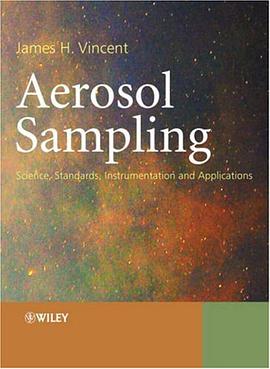

This book is a sequel to Volume I, Fundamental Probability: A Computational Approach
(2006), http://www.wiley.com/WileyCDA/WileyTitle/productCd-04
70025948.html, which covered the topics typically associated with a first course in
probability at an undergraduate level. This volume is particularly suited to beginning
graduate students in statistics, finance and econometrics, and can be used independently
of Volume I, although references are made to it. For example, the third equation
of Chapter 2 inVolume I is referred to as (I.2.3), whereas (2.3) means the third equation of
Chapter 2 of the present book. Similarly, a reference to Section I.2.3 means Section 3 of
Chapter 2 in Volume I.
The presentation style is the same as that in Volume I. In particular, computational
aspects are incorporated throughout. Programs in Matlab are given for all computations
in the text, and the book’s website will provide these programs, as well as translations
in the R language. Also, as in Volume I, emphasis is placed on solving more practical
and challenging problems than is often done in such a course. As a case in point,
Chapter 1 emphasizes the use of characteristic functions for calculating the density
and distribution of random variables by way of (i) numerically computing the integrals
involved in the inversion formulae, and (ii) the use of the fast Fourier transform. As
many students may not be comfortable with the required mathematical machinery, a
stand-alone introduction to complex numbers, Fourier series and the discrete Fourier
transform are given as well.
The remaining chapters, in brief, are as follows.
Chapter 2 uses the tools developed in Chapter 1 to calculate the distribution of sums
of random variables. I start with the usual, algebraically trivial examples using the
moment generating function (m.g.f.) of independent and identically distributed (i.i.d)
random variables (r.v.s), such as gamma and Bernoulli. More interesting and useful,
but less commonly discussed, is the question of how to compute the distribution of a
sum of independent r.v.s when the resulting m.g.f. is not ‘recognizable’, e.g., a sum of
independent gamma r.v.s with different scale parameters, or the sum of binomial r.v.s
with differing values of p, or the sum of independent normal and Laplace r.v.s.
Chapter 3 presents the multivariate normal distribution. Along with numerous examples
and detailed coverage of the standard topics, computational methods for calculating
the c.d.f. of the bivariate case are discussed, as well as partial correlation,which is required for understanding the partial autocorrelation function in time series
analysis.
Chapter 4 is on asymptotics. As some of this material is mathematically more challenging,
the emphasis is on providing careful and highly detailed proofs of basic results
and as much intuition as possible.
Chapter 5 gives a basic introduction to univariate and multivariate saddlepoint
approximations, which allow us to quickly and accurately invert the m.g.f. of sums
of independent random variables without requiring the numerical integration (and
occasional numeric problems) associated with the inversion formulae. The methods
complement those developed in Chapters 1 and 2, and will be used extensively in
Chapter 10. The beauty, simplicity, and accuracy of this method are reason enough to
discuss it, but its applicability to such a wide range of topics is what should make this
methodology as much of a standard topic as is the central limit theorem. Much of the
section on multivariate saddlepoint methods was written by my graduate student and
fellow researcher, Simon Broda.
Chapter 6 deals with order statistics. The presentation is quite detailed, with numerous
examples, as well as some results which are not often seen in textbooks, including
a brief discussion of order statistics in the non-i.i.d. case.
Chapter 7 is somewhat unique and provides an overview on how to help ‘classify’
some of the hundreds of distributions available. Of course, not all methods can be
covered, but the ideas of nesting, generalizing, and asymmetric extensions are introduced.
Mixture distributions are also discussed in detail, leading up to derivation of
the variance–gamma distribution.
Chapter 8 is about the stable Paretian distribution, with emphasis on its computation,
basic properties, and uses. With the unprecedented growth of it in applications (due
primarily to its computational complexity having been overcome), this should prove to
be a useful and timely topic well worth covering. Sections 8.3.2 and 8.3.3 were written
together with my graduate student and fellow researcher, Yianna Tchopourian.
Chapter 9 is dedicated to the (generalized) inverse Gaussian and (generalized) hyperbolic
distributions, and their connections. In addition to being mathematically intriguing,
they are well suited for modelling a wide variety of phenomena. The author of
this chapter, and all its problems and solutions, is my academic colleague Walther
Paravicini.
Chapter 10 provides a quite detailed account of the singly and doubly noncentral
F, t and beta distributions. For each, several methods for the exact calculation of the
distribution are provided, as well as discussion of approximate methods, most notably
the saddlepoint approximation.
The Appendix contains a list of tables, including those for abbreviations, special
functions, general notation, generating functions and inversion formulae, distribution
naming conventions, distributional subsets (e.g., χ2 ⊆ Gam and N ⊆ SαS), Student’s t
generalizations, noncentral distributions, relationships among major distributions, and
mixture relationships.
As in Volume I, the examples are marked with symbols to designate their relative
importance, with , and indicating low, medium and high importance, respectively.
Also as in Volume I, there are many exercises, and they are furnished with stars
to indicate their difficulty and/or amount of time required for solution. Solutions to all
exercises, in full detail, are available for instructors, as are lecture notes for beamerpresentation. As discussed in the Preface to Volume I, not everything in the text is
supposed to be (or could be) covered in the classroom. I prefer to use lecture time for
discussing the major results and letting students work on some problems (algebraically
and with a computer), leaving some derivations and examples for reading outside of
the classroom.
The companion website for the book is http://www.wiley.com/go/
intermediate.
具體描述
讀後感
評分
評分
評分
評分
用戶評價
相關圖書
本站所有內容均為互聯網搜索引擎提供的公開搜索信息,本站不存儲任何數據與內容,任何內容與數據均與本站無關,如有需要請聯繫相關搜索引擎包括但不限於百度,google,bing,sogou 等
© 2025 qciss.net All Rights Reserved. 小哈圖書下載中心 版权所有




















